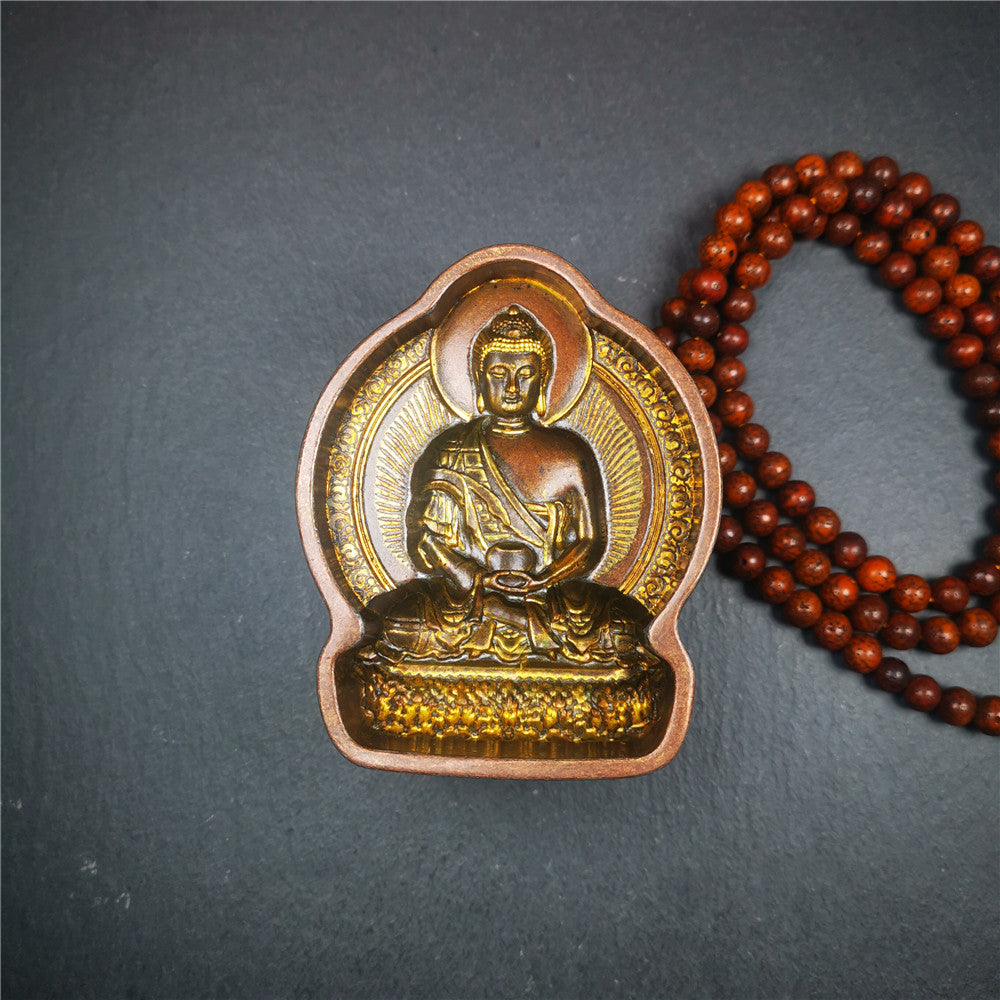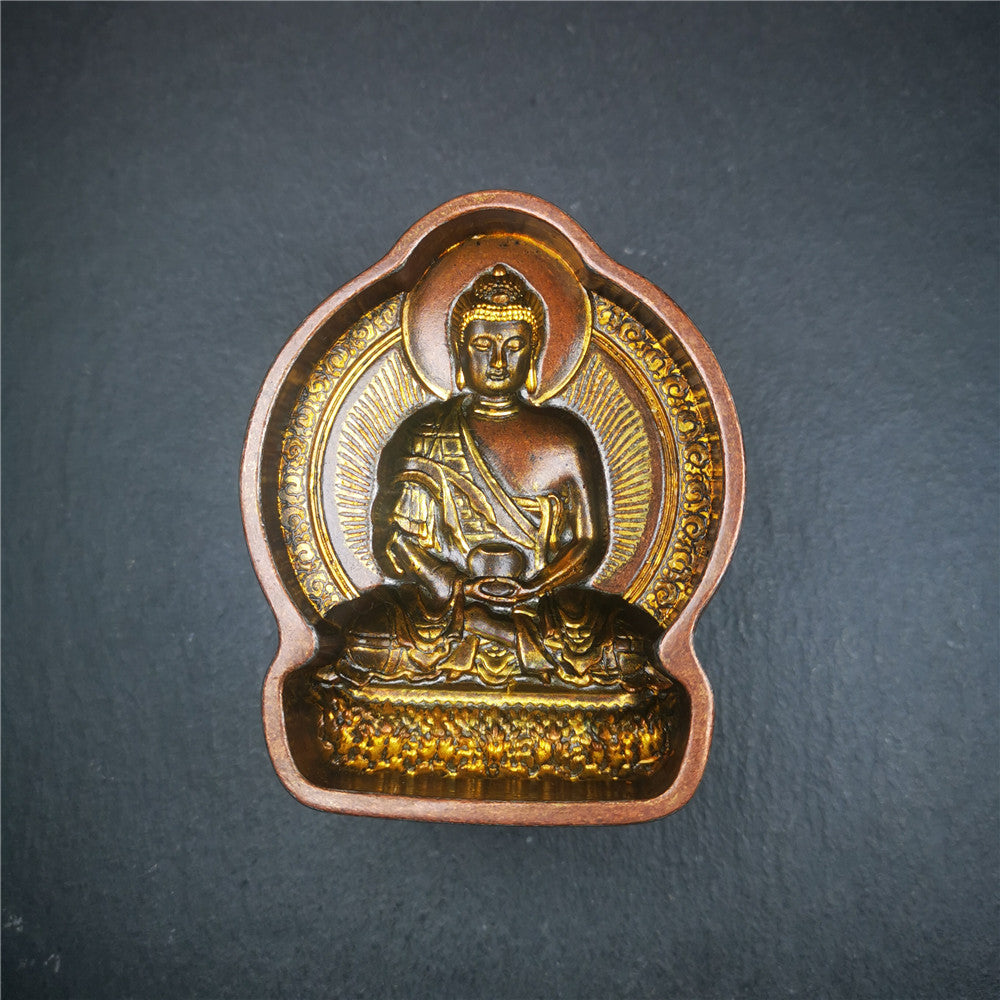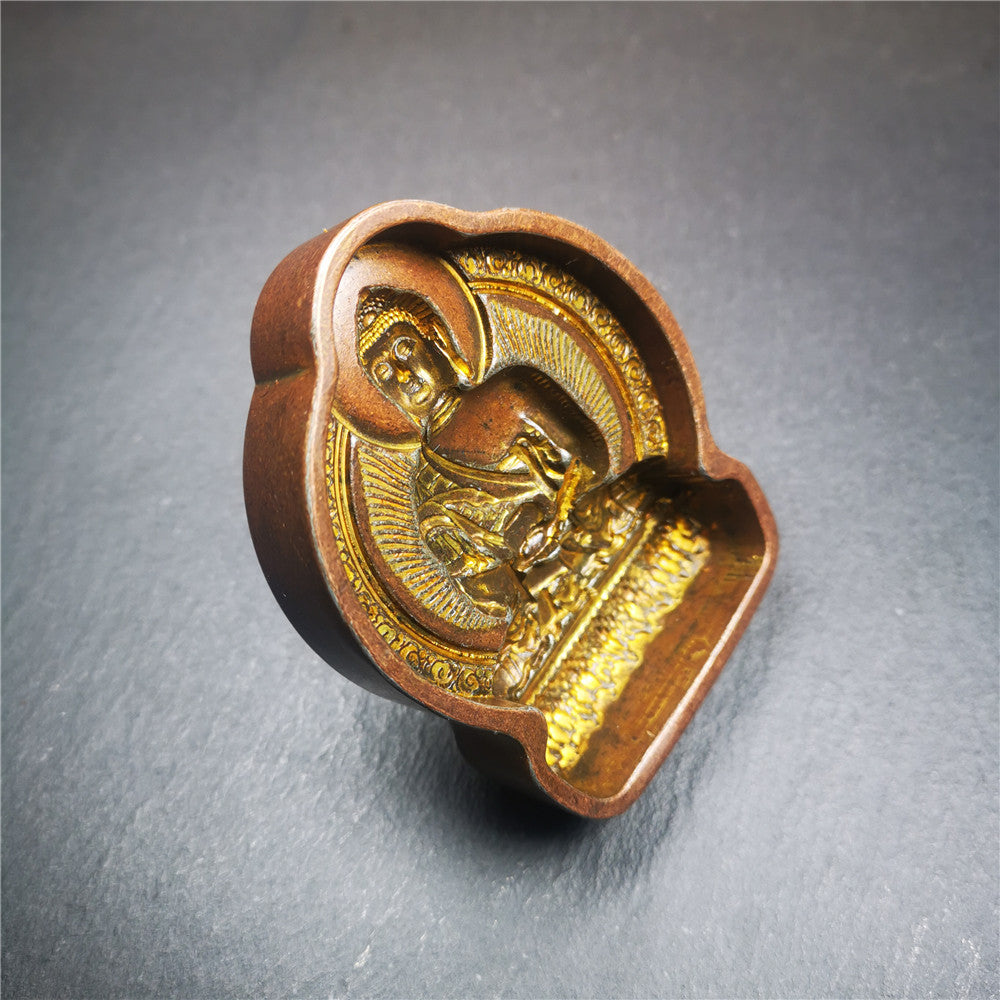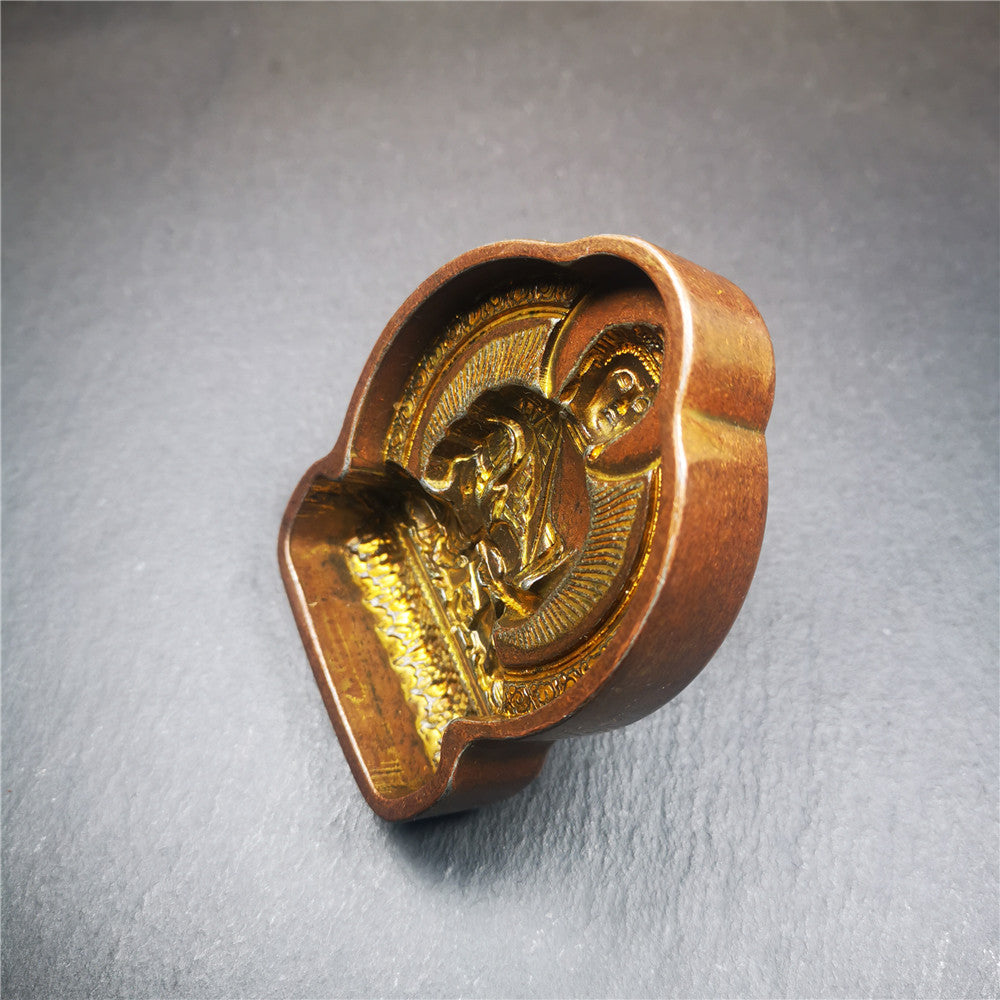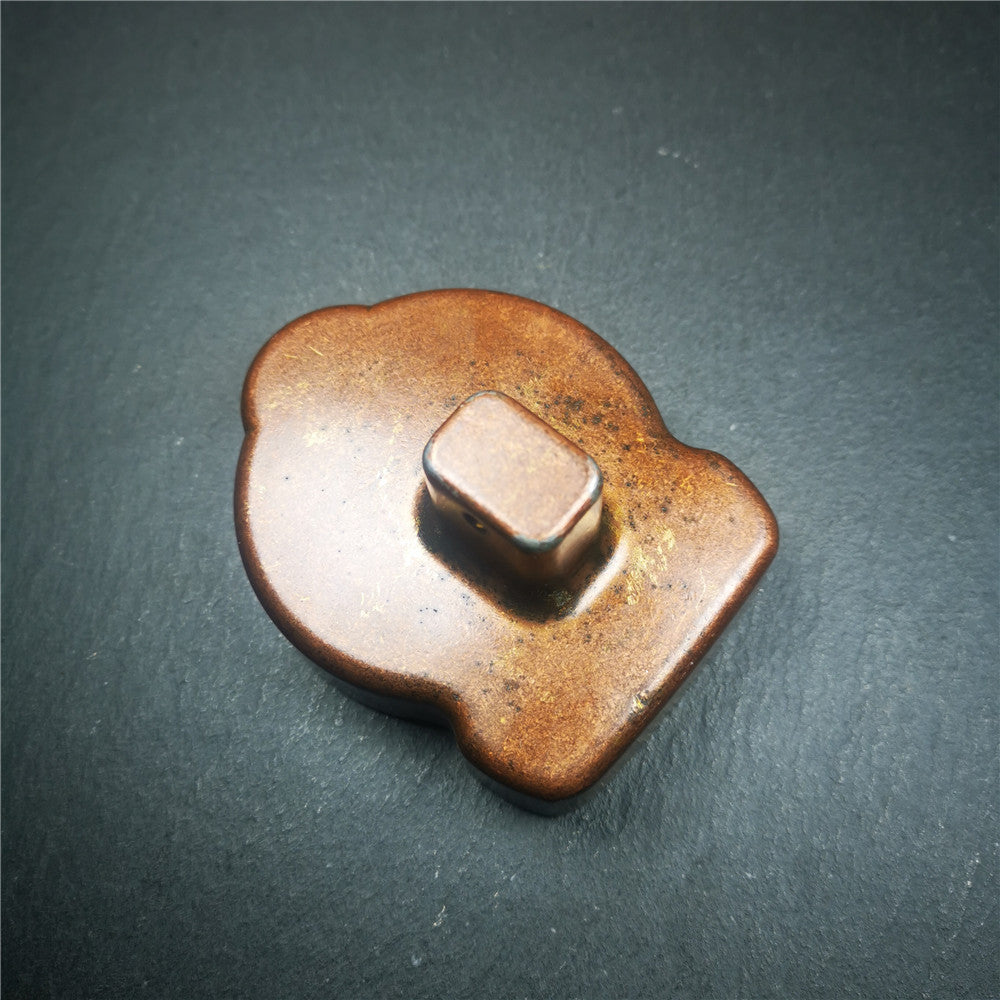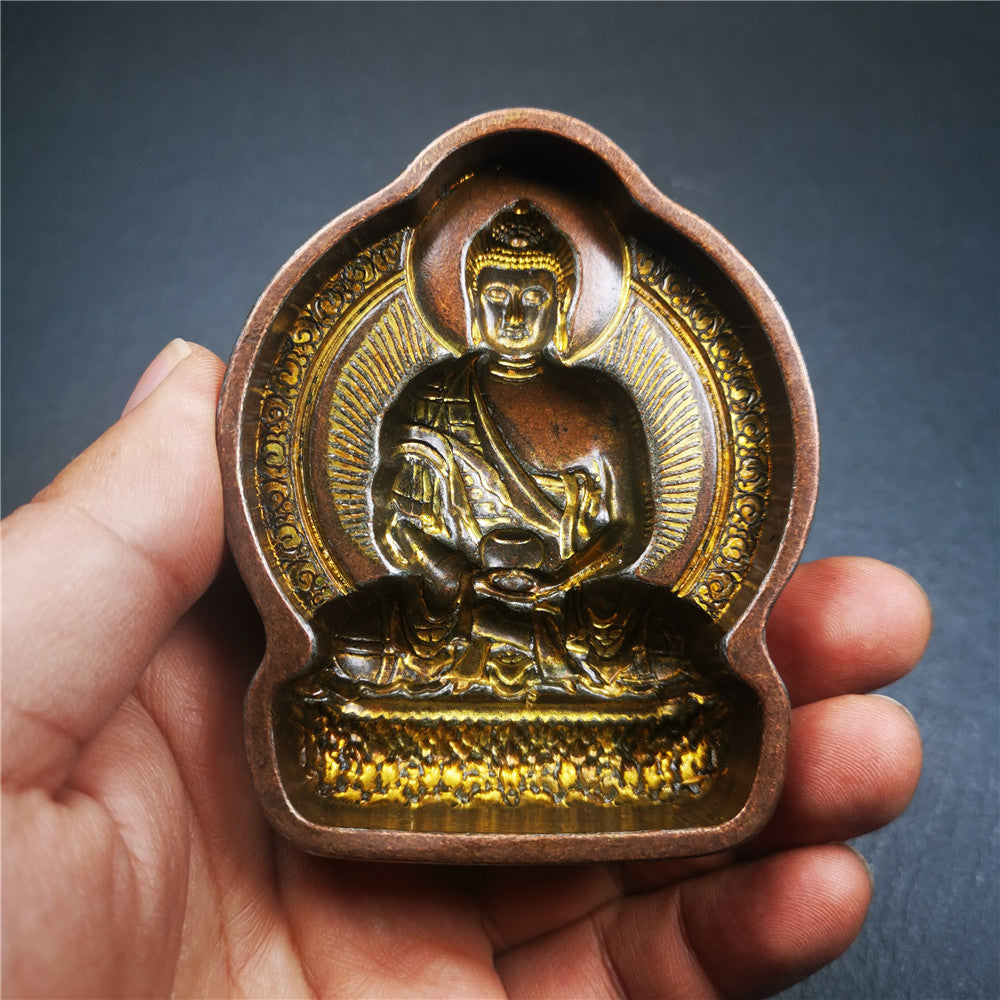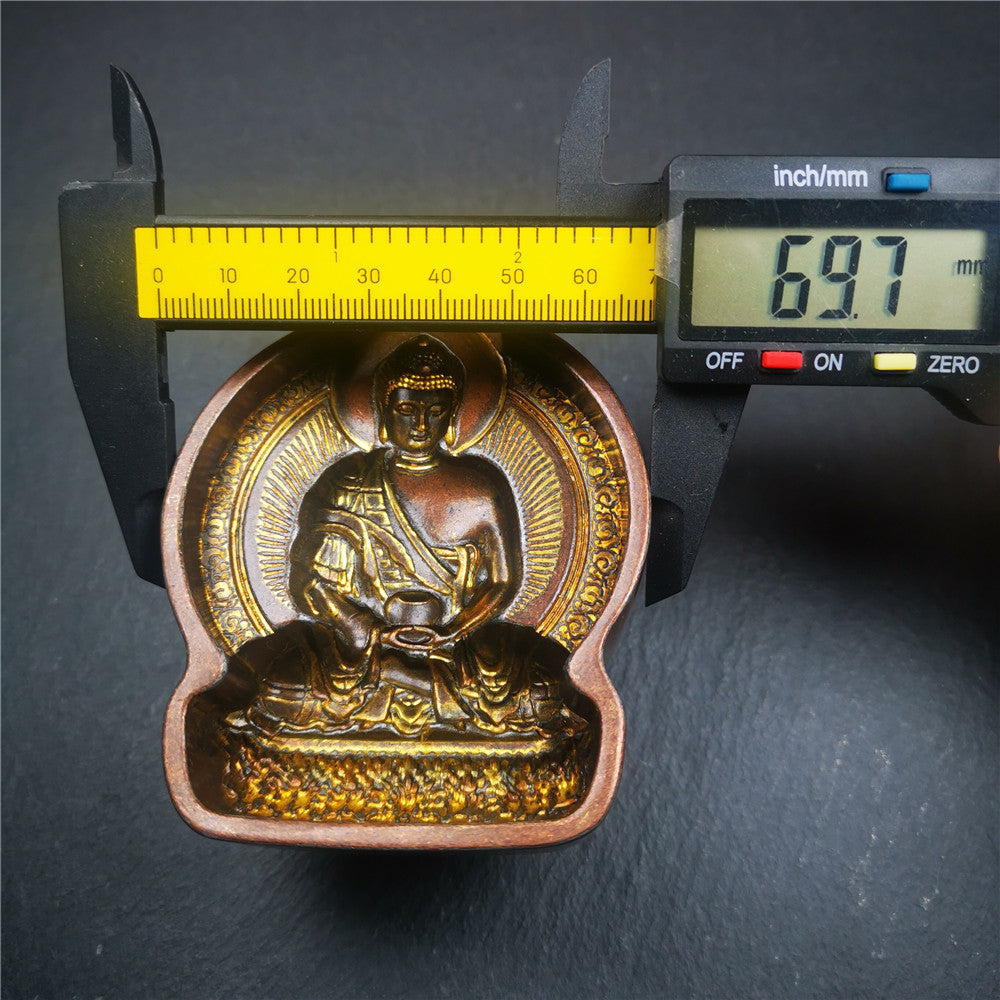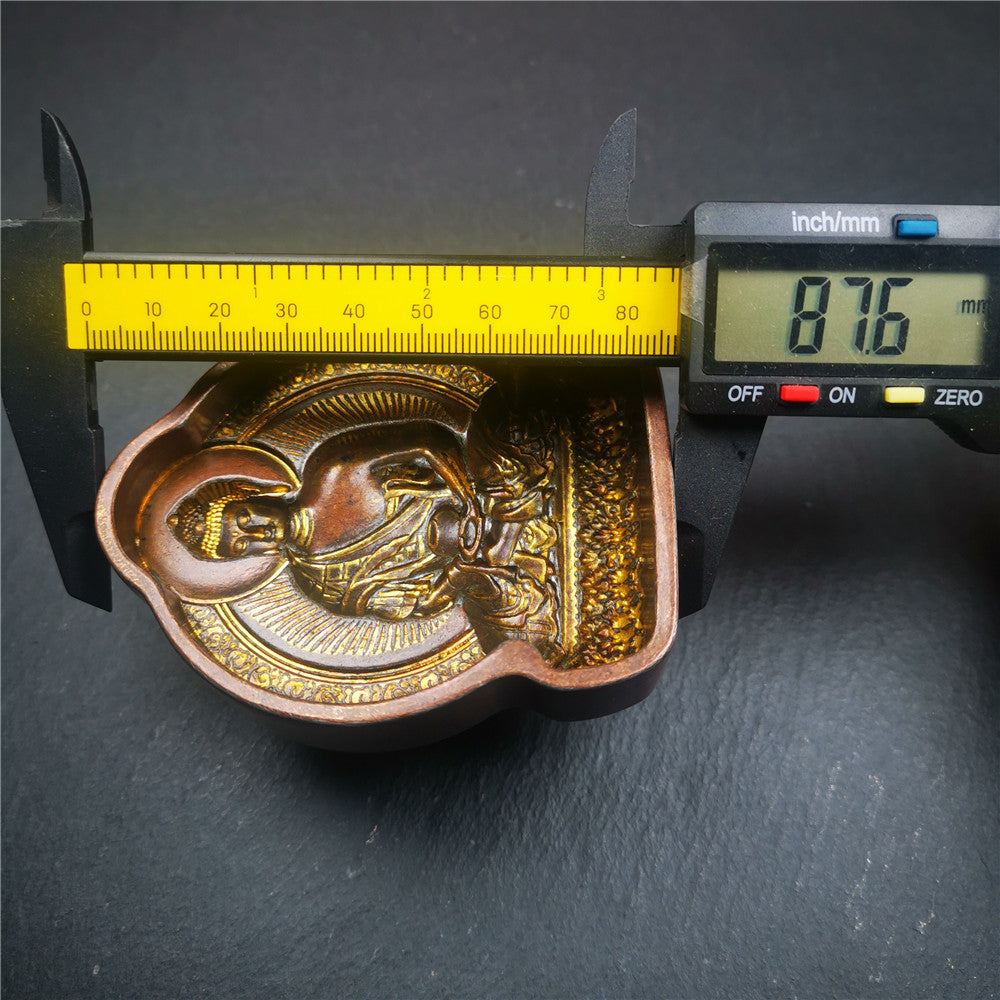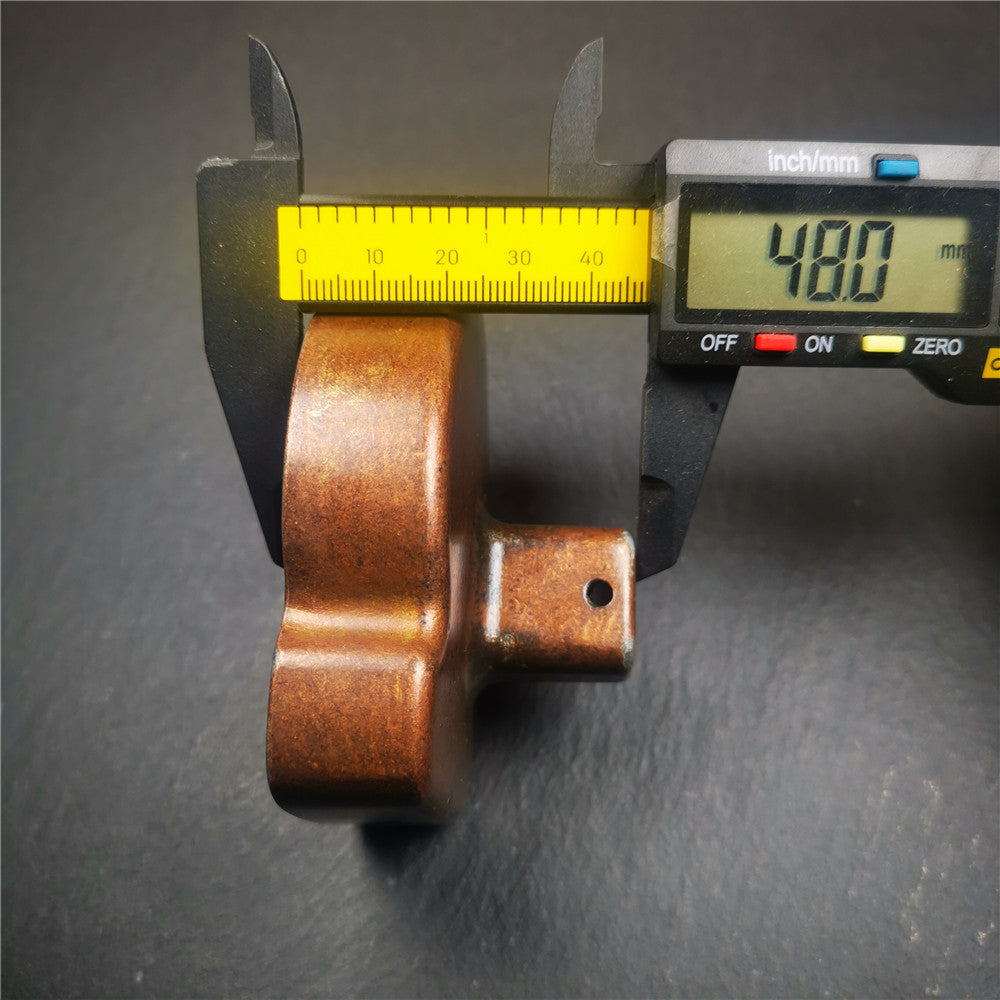Amitabha Tsa Tsa Mold
Amitabha Tsa Tsa Mold
⏱Vintage: 1990s
☞Handmade: 100%
⚒Materials: Copper
☲Size: 3.6" × 2.8"
Couldn't load pickup availability
❤This unique Amitayus,Amida,Amitabha Tsa-Tsa buddha statue mold is made by Tibetan craftsmen in Hepo Township, Baiyu County.
❤ With this exquisite mold, you can use clay to make your own Buddha statue as a decoration or consecration.
The statue that you make from your moulds can be left plain or painted.
You can learn how to make your statue with this video
❤ SPECIFICATIONS
Material: copper
Craft: Manual mold, pouring
Color:bronze
Size:
Height:about 90mm / 3.6 inches
Width :about 70mm / 2.8 inches
Thickness:about 45mm / 1.8 inches
Weight:about 440g / 15.5oz
❤HOW TO USE
1. Oil the mold to prevent the clay from sticking
2. Place the mold on the prepared clay
3. Press or hammer the mold hard to shape the clay and take out the blank
4. Dry the blank naturally, let it dry completely
5. (Optional) Bake it in the oven to enhance its hardness, just like pottery
6. (Optional) You can even paint it yourself.
❤You'll get 1pc Buddha statue mold as pictures shown.
❤ABOUT TSA TSA
Tsa Tsa (Tibetan: ཚ་ཚ་, Willy: tsha tsha; Sanskrit: satchāya; Pali: sacchāya or sacchāha), a small mold-releasing clay sculpture in Tibetan Buddhism.
Tsa Tsa originated from India and was introduced to Tibet in the seventh century. It is extruded through a metal mold, and the cement is mixed with wheat grains, treasure powder, spices or the ashes of the monk. The patterns on it were mainly in Indian style in the early days, such as the Sky Tower, Gate Tower, Bodhi Pagoda, and the mantras of the Prajna Paramita Heart Sutra. Later, Tibet began to make its own molds, and the patterns of gods and Buddha images and the six-character mantra began to replace the earlier Indian style.
Tsa Tsa is generally placed in the pagoda as a stupa, or placed in a special "Tsa Tsa kang", or enshrined in temple halls, mani piles, monks' cultivation caves and other places.
❤ABOUT AMITAYUS
Amitayus appears within the trilobe arch of a temple whose superstructure (shikhara) rises above the attendant bodhisattvas in receding tiers, and is then surmounted by a shrine enclosing a Buddha in bhumisparsha mudra, the earth-touching gesture, a reference to the historical Buddha's enlightenment.
Streamers arranged in an even scrolling pattern fall from a parasol at the top of the shikhara, and cloudborne attendants bear a parasol and a banner, symbols heralding the attainment of enlightenment.
